
Content
Fan Culture – a social and political indicator
Next Event: the future of Football
Think.Eat.Save. Reduce Your Foodprint
Club of Amsterdam blog
News about the Future
The internet must remain borderless
Recommended Book: A Beautiful Game: The World’s Greatest Players and How Soccer Changed Their Lives
Computer Aided Architectural Design, Departement for Architecture, ETH Zürich
Welcome to the Club of Amsterdam Journal.
Philosopher Albert Camus, who was a goalie for his university team before TB ended his professional hopes. He later said, “what I know most about morality and the duty of man I owe to football.”
Join us at our next event about the future of Football – Thursday, February 28, 18:30 – 21:15!
Felix F Bopp, Founder & Chairman
Fan Culture – a social and political indicator

By James M. Dorsey, a senior fellow at the S. Rajaratnam School of International Studies, co-director of the University of Wuerzburg’s Institute for Fan Culture, and the author of The Turbulent World of Middle East Soccer blog.
Remarks at 2. Colloquium of the Institute of Fan Culture, University of Wuerzburg, January 11-12, 2013
The past year has been one of repeated incidents of racism on the pitch. The question I asked myself was what could be gleaned from comparing last year’s shouting of racist slogans in Serbia during the Under-21 match between Serbia and England, and attacks by rabid Beitar Jerusalem supporters against Palestinians in a Jerusalem mall and Jews advocating compromise with the Palestinians.
Those familiar with Serbian football are likely to argue that there is no reason to be surprised at the incident. Serbian fan culture has always been highly nationalistic and had a racist element. It always has been violent. As far back as World War Two, Serb fans were believed to have supported the Nazis. And in the 1990s they formed key elements of Milosevic’s paramilitaries. In 2005, they raised banners supporting the slaughter in Srebenica during a World Cup qualifier against Bosnia.
Similarly, Beitar Jerusalem fans have always been known for their rabid hatred of the Arabs and Palestinians. The one thing that has never been clear however is who they hated more the Palestinians or the Ashkenazi Jews. Beitar Jerusalem is the only major Israeli club that has never hired a Palestinian player even though Palestinians rank among Israel’s top players. Beitar’s matches are characterized by racist anti-Arab and anti-Muslim slogans. In recent months, Beitar fans attacked a Jerusalem mall, singling out Palestinian shoppers. They also attacked a Jewish female musician on a street who expressed disagreement with their racism and violence and more recently vowed to keep their club “pure” in response to the hiring of two Chechen Muslim players.
Violence and racism is so endemic to Serbian and Israeli soccer that the Serbian interior ministry and the Israeli Football Association (IFA) have separate units to combat hooliganism and racism. In fact, the Israeli association is the only one in the Middle East and North Africa that wages an anti-racist campaign even if one can question whether it does so wholeheartedly and effectively. By contrast with Israel, the Serbian prime minister refused to acknowledge that last year’s incident was racist and the federation refused to investigate the incident. The federation’s attitude also contrasts starkly with the approaches of UEFA and the English FA towards racism and tarnishes Serbian efforts to join the EU.
So if the Serbians and the Beitarniks are fan groups with long-standing traditions and attitudes, what do the most recent incidents tell us about whether there is anything new and if so what?
In fact, they do tell us something, namely that they are one indicator of what does and does not change in society. Serbian prime minister Ivica Dacic’s attitude tells us that 13 years after the overthrow of Milosovic and his ruinous Serbian nationalism, Serbia has yet to seriously tackle intolerance and racism. In a broader context, last year’s incident at the Under-21 championship in Krusevac is part of the rise of a far-right in Europe that is anti-immigrant and anti-foreigner at a time of severe economic difficulty.

Similarly, the Israeli fans’ violence was at closer examination very telling. Beitar Jerusalem was taking its battles out of the stadium at a time that more than four decades of occupation of Palestinian land and perceived Palestinian ability to produce a viable partner in peace has hid a brutalizing effect on Israeli society. The violence also serves as in indicator of a greater degree of intolerance as well as a shift to the right of Israeli public opinion despite the emergence of a center-left political party – albeit one that refuses to work with Palestinian members of the Israeli parliament – in this month’s Israeli election. That shift is symbolized by the attack of an elderly Jewish musician just because her views were more liberal than theirs.
There is of course a third major intersection of fan activism and politics these days. As we speak here, ultras are part of mounting protests against the government of Egyptian president Mohammed Morsi in the wake of the sentencing of 21 soccer fans in the trial of those allegedly responsible for the death a year ago of 74 fans in the Suez Canal city of Port Said in a politically loaded brawl.
And there is something else that these three case studies have in common that is I believe relevant to why we are here today. All three help us establish some definitions based on the work of Melissa M. Brough and Sangita Shresthova [1]:
1. We are looking at groups of people who assert their identity through popular culture – in this case soccer, but it could also be music or video. This assertion is active and often creative in its production of various forms of popular culture. Think of ultras music, graffiti and videos.
2. What sets the groups I look at further apart from other fan groups is their social and political activism defined as intentional action to challenge existing hegemonies and provoke political and/or social change.
3. Increasingly socially aware, politically engaged fan groups often are engines of movements that go far beyond the confines of what they are fans of – think of the very distinct political roles of fans in the creation of the gay movement in the 1950s or fans of Joss Whedon and the canceled TV show Firefly who continue to gather every year to organize “Can’t Stop the Serenity,” a fund-raiser for the women’s rights and advocacy organization Equality Now.
4. A further commonality is that what politicized these groups or at the very least turned them into political actors were either societal trends that increasingly became intolerable or an event including for example confrontation with law enforcement. However I would suggest that as we move forward we don’t ignore efforts to turn enamor with a product of popular culture into civic action. One example of this is the Harry Potter Alliance (HPA), a US-based nonprofit organization that works “for human rights, equality, and a better world just as Harry and his friends did.” The group is inspired by Dumbledore’s Army in the Harry Potter narratives. The alliance builds on active and creative engagement with the Harry Potter world by connecting its figures to goals of social justice such as fair trade and marriage equality.
5. Fandom turns political when it is employed as a tool of resistance or change as in the case of the Egyptian ultras, the Harry Potter Alliance, and the push to assert identity, nationhood or further statehood as in the case of the Palestinians, the Kurds, Kosovo and northern Cyprus just to mention a few. It is worth noting in this context that hitherto social movement theory has rarely been applied to the analysis of fandom. The importance of doing so is highlighted by the role of ultras in the Arab revolts and the fact that for example the ultras in Egypt constitute the second largest civic group after the ruling Muslim Brotherhood.
6. The role of law enforcement and security is often key in the politicization and radicalization of fans. Much of the post-Mubarak violence stems from clashes between the militants and security forces. Their battle is a battle for karama or dignity. Their dignity is vested in their ability to stand up to the dakhliya or interior ministry, the knowledge that they no longer can be abused by security forces without recourse and the fact that they no longer have to pay off each and every policemen to stay out of trouble.
That dignity is unlikely to be fully restored until the police and security forces have been reformed – a task Mr. Morsi’s government has so far largely shied away from. Official foot-dragging in holding security officers accountable as in the case of Port Said and the deaths of hundreds of protesters in the last two years reinforces the perception of the police and security forces as an institution that in the words of scholars Eduardo P. Archetti and Romero Amilcar [2] is “exclusively destined to harm, wound, injure, or, in some cases, kill other persons.” It gives “police power…the aura of omnipotence” who “at the same time lost all legitimacy both in moral and social terms… To resist and to attack the police force is thus seen as morally justified,” they argue.
7. Finally, this situation gives rise to the question whether all militant, violence-prone fans are hooligans. I would argue no. Israeli and Serb fans live today in societies with multiple options to express themselves and highlight their concerns and discontent. By contrast, Egyptian ultras as well as fans in for example Algeria or Iran, even if violence-prone are a perfect example of what Messrs Archetti and Amilcar argue. Egypt’s police and security force existed not to serve the people, but to brutally enforce the regime’s repression. Egyptians encountered their brutality not just in the stadiums but daily in the popular neighborhoods. Even if I favor a distinction between hooligans and militants, the North African ultras’ self-definition comes closest to the controversial view of Marxist scholars such as Ian Taylor and John Clarke who argued that British hooligans were the product of unemployment and urban decay, a “subcultural agent” that had been abandoned by his parents, government and his soccer club management.
All of this is food for thought, a first stab at conceptualization, an effort to spark a discussion that is long overdue.
Thank you.
James M. Dorsey is a speaker at our event about the future of Football – Thursday, February 28
[1] Melissa M. Brough and Sangita Shresthova, Fandom meets activism: Rethinking civic and political participation, Transformative Works and Culture, Vol 10, 2012, http://journal.transformativeworks.org/index.php/twc/article/view/303/265
[2] Eduardo P. Archetti and Romero G. Amilcar, Death and Violence in Argentinian Football, in Football, Violence and Social Identity edited by Richard Guillianotti, London, Routledge, 2012, page 48
Next Event: the future of Football
the future of Football
Thursday, February 28, 2013
Location: Amsterdam
The conference language is English.
Supported by India House
The speakers and topics are
Tom Fadrhonc, Consultant, itim International, former General Manager Benelux, Nike
The future of Football. More or less united?
James M. Dorsey, senior fellow at the S. Rajaratnam School of International Studies (RSIS) at Nanyang Technological University in Singapore and co-director of the Institute for Fan Culture of the University of Würzburg
Soccer – A Middle Eastern and North African Battlefield.
… and more ..
Our moderator is John Mahnen, Business Development Manager, Heg Consult
Think.Eat.Save. Reduce Your Foodprint

Think, Eat, Save:FAO, UNEP and partners launch global campaign on food waste
Simple actions by consumers and food retailers can dramatically cut the 1.3 billion tonnes of food lost or wasted each year and help shape a sustainable future, according to a new global campaign to cut food waste launched today by the Food and Agriculture Organization (FAO), the UN Environment Programme (UNEP), and partners.
The Think.Eat.Save. Reduce Your Foodprint campaign is in support of the SAVE FOOD Initiative to reduce food loss and waste along the entire chain of food production and consumption.
Worldwide, about one-third of all food produced, worth around $1 trillion, gets lost or wasted in food production and consumption systems, according to data released by FAO.
“Together, we can reverse this unacceptable trend and improve lives. In industrialized regions, almost half of the total food squandered, around 300 million tonnes annually, occurs because producers, retailers and consumers discard food that is still fit for consumption,” said José Graziano da Silva, FAO Director-General. “This is more than the total net food production of Sub-Saharan Africa, and would be sufficient to feed the estimated 870 million people hungry in the world.”
“If we can help food producers to reduce losses through better harvesting, processing, storage, transport and marketing methods, and combine this with profound and lasting changes in the way people consume food, then we can have a healthier and hunger-free world,” Graziano da Silva added.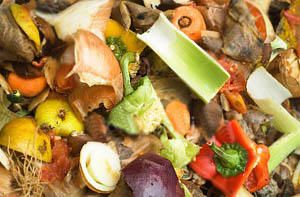
Global Food Losses and food waste – a study by SAVE FOOD
Overview of the key findings:
• Roughly one third of the food produced in the world for human consumption every year — approximately 1.3 billion tonnes — gets lost or wasted.
• Every year, consumers in rich countries waste almost as much food (222 million tonnes) as the entire net food production of sub-Saharan Africa (230 million tonnes).
• The amount of food lost or wasted every year is equivalent to more than half of the world’s annual cereals crop (2.3 billion tonnes in 2009/2010).
• Food loss and waste also amount to a major squandering of resources, including water, land, energy, labour and capital and needlessly produce greenhouse gas emissions, contributing to global warming and climate change.
• In developing countries food waste and losses occur mainly at early stages of the food value chain and can be traced back to financial, managerial and technical constraints in harvesting techniques as well as storage –and cooling facilities. Thus, a strengthening of the supply chain through the support farmers and investments in infrastructure, transportation, as well as in an expansion of the food – and packaging industry could help to reduce the amount of food loss and waste.
• In medium- and high-income countries food is wasted and lost mainly at later stages in the supply chain. Differing from the situation in developing countries, the behaviour of consumers plays a huge part in industrialized countries. Moreover, the study identified a lacking coordination between actors in the supply chain as a contributing factor. Farmer-buyer agreements can be helpful to increase the level of coordination. Additionally, raising awareness among industries, retailers and consumers as well as finding beneficial use for save food that is presently thrown away are useful measures to decrease the amount of losses and waste.
Club of Amsterdam blog

Club of Amsterdam blog
http://clubofamsterdam.blogspot.com
Joy Rides and Robots are the Future of Space Travel
The Transposon
10-step program for a sick planet
Public Brainstorm: Economic-Demographic Crisis
Public Brainstorm: Energy
Public Brainstorm: EnvironmentPublic Brainstorm:Food and WaterPublic Brainstorm: Overpopulation
News about the Future

Researchers make DNA storage a reality
Researchers at the EMBL-European Bioinformatics Institute (EMBL-EBI) have created a way to store data in the form of DNA – a material that lasts for tens of thousands of years. The new method makes it possible to store at least 100 million hours of high-definition video in about a cup of DNA.
There is a lot of digital information in the world – about three zettabytes’ worth (that’s 3000 billion billion bytes) – and the constant influx of new digital content poses a real challenge for archivists. Hard disks are expensive and require a constant supply of electricity, while even the best ‘no-power’ archiving materials such as magnetic tape degrade within a decade. This is a growing problem in the life sciences, where massive volumes of data – including DNA sequences – make up the fabric of the scientific record.
“We already know that DNA is a robust way to store information because we can extract it from bones of woolly mammoths, which date back tens of thousands of years, and make sense of it,” explains Nick Goldman of EMBL-EBI. “It’s also incredibly small, dense and does not need any power for storage, so shipping and keeping it is easy.”Although there are many practical aspects to solve, the inherent density and longevity of DNA makes it an attractive storage medium. The next step for the researchers is to perfect the coding scheme and explore practical aspects, paving the way for a commercially viable DNA storage model.

Solar water disinfection – the SODIS method – is a simple procedure to disinfect drinking water. Contaminated water is filled in a transparent PET-bottle or glass bottle and exposed to the sun for 6 hours. During this time, the UV-radiation of the sun kills diarrhoea-causing pathogens. The SODIS-method helps to prevent diarrhoea and thereby is saving lives of people. This is urgently necessary as still more than 4000 children die every day from the consequences of diarrhoea.
When developing the SODIS method, it was important to know which germs die and how much sunlight is required to kill them. These questions have been answered for most of the germs that threaten the health of humans. The SODIS method kills bacteria, viruses, and most parasites. We know not only that the germs die; we are also beginning to find out why.
The internet must remain borderless

By Peter Cochrane, an IT consultant and former chief technologist at BT
The internet must remain borderless and not under the control of any one country, government or organisation.
THROUGHOUT THE WEST, we enjoy the freedom to communicate, associate, travel and trade. We also expect to be able to think, preach and speak without political, security or financial penalty. These basic human rights have been hard-won over centuries and should not be taken as god-given; they have to be defended.
Freedom is now epitomised by websites and blogs; social nets that rapidly became a part of our culture. That these are beyond the reach of government control or censorship is an outcome of self-organisation and viral growth. For the most part, the system works well, but we would be unwise to take it for granted.
Sadly, a large proportion of humanity does not enjoy such riches, but live under regimes that censor, edit and steer information to their own religious and/or political purposes. When visiting or communicating with people in such areas, I have been impressed with the various subterfuges employed to by-pass all forms of control. Cut off, or try to control, email, text or instant message and people will adopt anonymising software. Ban Google and people will employ tunnels and proxies to gain access through other countries. Close down the internet and riots quickly follow.
It is far too late for total control; the genie is out of the bottle. Previously suppressed peoples have tasted freedom and want more, while several Western governments have attempted to monitor all net traffic and found themselves trying to boil the ocean.
New freedoms equate to new opportunities, creativity, business models and modes of trading as well as advances for education, healthcare, industry, commerce and society, but the price is more tolerance and less control in large measure.
We have now reached an interesting epoch, with five billion people able to access the internet via PC, laptop, tablet and smartphone – we are just a hair’s breadth away from liberating all people with access to everything. So it is something of a surprise to learn that the recent International Telecommunications Union (ITU) gathering in Dubai had Control of The Internet on the agenda. Why do they think that they are involved in or entitled to consider this, you might ask. It is none of their business and outside their remit. The ITU was born of a need for countries and peoples to be able to communicate using standard interfaces, protocols and network topologies, not to control or restrict content.
The ITU is an organ of the UN and this conference hosted more than 1,950 delegates, a number of whom are inclined to vote in the direction of control and limitation. To be blunt, the ITU is becoming dominated by controlist regimes, and they are making a move to control the internet across the globe. This is beyond defining and regulating the wireless and optical spectrum, interfaces and protocols.
We already see differing degrees of internet freedom by region, but there is a growing voice to make it global and uniform. Perhaps the worst feature of all this is that the ITU meeting and voting is conducted behind closed doors.
UN secretary-general Ban Ki-moon said: “The overall objective is to ensure universal access to the benefits of IT, including for the two-thirds of the world’s population currently not on-line. The management of information and communication technology should be transparent, democratic and inclusive of all stakeholders.”
However, many people think this conference may reshape the internet for decades to come. I doubt it, and my prediction is that all attempts at censorship will be thwarted by new solutions. We have all seen what openness can create in terms of economic and social value. It is also essential that the internet remains borderless, belonging to everyone, and not under the control of any one country, government or organisation.
Recommended Book

A Beautiful Game: The World’s Greatest Players and How Soccer Changed Their Lives
By Tom Watt
Wherever you are on earth, it’s only a matter of time before you come across children playing soccer. Another five minutes and you will probably find yourself having a ball rolled to your feet as an invitation to join in the game. Soccer is a common language and a culture shared: a joy, a passion, an escape, and an affirmation of identity understood and celebrated by children – and their parents – in every country around the globe.
For this unique collaborative project, soccer writer Tom Watt talked to the world’s top players about growing up and falling in love with the game: Argentina’s Lionel Messi and Brazil’s Gilberto Silva; England’s David James and Scotland’s Craig Gordon; Italy’s Fabio Cannavaro, Spain’s Iker Casillas, and France’s Franck Ribéry; South Africa’s Benni McCarthy and Nigeria’s Nwankwo Kanu; USA’s Landon Donovan and Japan’s Shunsuke Nakamura; and the world’s most famous player, David Beckham.
A Beautiful Game tells their stories, in the players’ own words – stories of boys who would grow up to be heroes for a new generation of young players and fans. They look back to their childhoods: to their family homes, to their schoolrooms, to the friends they grew up with, and to the places where they first played the game that has made them stars. The players’ words are brought to life with over 160 full-color images that offer rare, emotive, and striking insights into childhood all over the world, and celebrate soccer’s ability to touch the lives of children – and adults – wherever the beautiful game is played.
Computer Aided Architectural Design Departement for Architecture, ETH Zürich
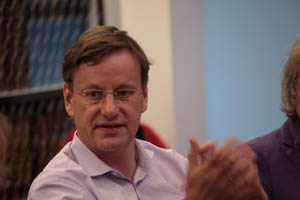
Professor Ludger Hovestadt, Chair for Computer Aided Architectural Design (CAAD) at the Swiss Federal Institute of Technology (Eidgenössische Technische Hochschule, ETH) in Zürich.
His approach, broadly speaking, is to look for a new relationship between architecture and information technology and aims at developing a global perspective that relates to and integrates with developments in different fields such as politics and demographics, as well as technology, in a post-industrial era. He is the inventor of the digitalSTROM® chip and founder of several spin-off companies in the fields of Smart Building Technology and Digital Design and Fabrication.
a few activities of the Institute …
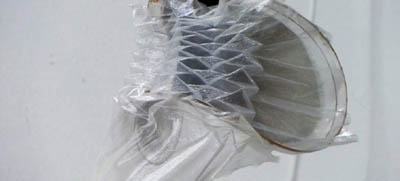
Animated Textile
Animated Textiles was a five-day workshop held at the Swedish School of Textiles at the University of Borås from Sept. 17th to 21st 2012.

Within this workshop we explored the combination of soft electroactive polymers with various lightweight textile systems to create animated surfaces, structures and assemblies. The workshop participants, both Master and Phd students, were split in three groups of four people each. After a generous introduction into the techniques of producing electroactive polymers, each group produced their own membranes based on iterative mutations of a previously defined working component. The necessary support frames were cut using a laser cutter. The components that exhibited the best behavior and strongest deformation were picked to become attached to textiles and fabrics in order to form animated ecologies of moving textile assemblies. At the end of the workshop each group had built a physical prototype which was then presented to a larger audience.
Within this workshop we explored the combination of soft electroactive polymers with various lightweight textile systems to create animated surfaces, structures and assemblies. The workshop participants, both Master and Phd students, were split in three groups of four people each. After a generous introduction into the techniques of producing electroactive polymers, each group produced their own membranes based on iterative mutations of a previously defined working component. The necessary support frames were cut using a laser cutter. The components that exhibited the best behavior and strongest deformation were picked to become attached to textiles and fabrics in order to form animated ecologies of moving textile assemblies. At the end of the workshop each group had built a physical prototype which was then presented to a larger audience.
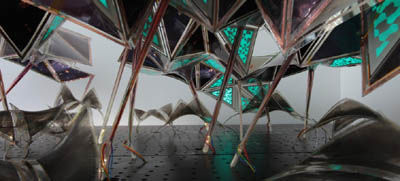
ShapeShift is an experiment in future possibilities of architectural materialization. This project explores the potential application of electro-active polymer (EAP) at an architectural scale. EAP offers a new relationship to built space through its unique combination of qualities. It is an ultra-lightweight, flexible material with the ability to change shape without the need for mechanical actuators. As a collaboration between the chair for Computer Aided Architectural Design (ETHZ) and the Swiss Federal Laboratories for Materials Science and Technology (EMPA), ShapeShift bridges gaps between advanced techniques in architectural design/fabrication and material science as well as pushing academic research towards real world applications.
The EmbeddedLab is an open group of creative researchers and students, within the chair for caad, ETH Zürich. We are interested in developing neat Physical-, Smart-, Wearable-, Wireless Applications.

Stone Node
The aim of this project is to research, if there is a way using Arduino and it‘s embedded technology to track falling rock motion and rotation, as well as the decent and impact. The advantage would be, to have tiny, easy accessible, reusable and affordable electronics. This would also dramatically shrink the costs of every experiment in that field.

China Node
China Node project is a remote control system based on Arduino, Ethernet shield and RFM12 wireless module, which is cooperated with the CAAD of Southeast University in China.

dSail Trim System
Using wireless sensor networks to monitor airflows and pressure differences on sails in realtime. Imagine you could see the airflows in your sails and trim your boat to the max..
Ludger Hovestadt was a speaker at the Club of Amsterdam event about the future of Architecture (19 May 2004)
Futurist Portrait: Evgeny Morozov

Born in Belarus, Evgeny Morozov attended the American University in Bulgaria and later lived in Berlin before moving to the United States.
Morozov is a visiting scholar at Stanford University, a fellow at the New America Foundation, and a contributing editor of and blogger for Foreign Policy magazine, for which he writes the blog Net Effect. He has previously been a Yahoo! fellow at Georgetown University’s Walsh School of Foreign Service, a fellow at the Open Society Institute, director of new media at the NGO Transitions Online, and a columnist for the Russian newspaper Akzia. In 2009 he was chosen as a TED fellow where he spoke about how the Web influences civic engagement and regime stability in authoritarian, closed societies or in countries “in transition”.
Morozov’s writings have appeared in various newspapers and magazines around the world, including The New York Times, The Wall Street Journal, Financial Times, The Economist, The Guardian, New Scientist, The New Republic, Times Literary Supplement, Newsweek International, International Herald Tribune, Boston Review, Slate, and the San Francisco Chronicle.
Morozov expresses skepticism about the popular view that the Internet is helping to democratize authoritarian regimes, arguing that it could also be a powerful tool for engaging in mass surveillance, political repression, and spreading nationalist and extremist propaganda. He has also criticized what he calls “The Internet Freedom Agenda” of the US government, finding it naive and even counterproductive to the very goal of promoting democracy through the Web.
Morozov’s new book:
To Save Everything, Click Here: The Folly of Technological Solutionism
In the very near future, “smart” technologies and “big data” will allow us to make large-scale and sophisticated interventions in politics, culture, and everyday life. Technology will allow us to solve problems in highly original ways and create new incentives to get more people to do the right thing. But how will such “solutionism” affect our society, once deeply political, moral, and irresolvable dilemmas are recast as uncontroversial and easily manageable matters of technological efficiency? What if some such problems are simply vices in disguise? What if some friction in communication is productive and some hypocrisy in politics necessary? The temptation of the digital age is to fix everything – from crime to corruption to pollution to obesity – by digitally quantifying, tracking, or gamifying behavior. But when we change the motivations for our moral, ethical, and civic behavior we may also change the very nature of that behavior. Technology, Evgeny Morozov proposes, can be a force for improvement – but only if we keep solutionism in check and learn to appreciate the imperfections of liberal democracy. Some of those imperfections are not accidental but by design.
Arguing that we badly need a new, post-Internet way to debate the moral consequences of digital technologies, To Save Everything, Click Here warns against a world of seamless efficiency, where everyone is forced to wear Silicon Valley’s digital straitjacket.
Evgeny Morozov: The End of Cyber Utopia
Agenda
| Season Events 2012/2013 February 28, 2013 the future of Football Location: Amsterdam Supported by India House  the future of Impact Investment March 28, 2013, 18:30 – 21:15 Location: Amsterdam Supported by India House April 25, 2013 the future of Digital Identity or the death of Social Media as we know it. Location: Info.nl, Sint Antoniesbreestraat 16, 1011 HB Amsterdam [Next to Nieuwmarkt] Supported by Info.nl & Freelance Factory May 30, 2013 the future of Europe Location: Amsterdam In collaboration with the World Future Society Supported by India House June 27, 2013 the future of Urban Gardening Location: Geelvinck Museum, Keizersgracht 633, 1017 DS Amsterdam Supported by Geelvinck Museum |







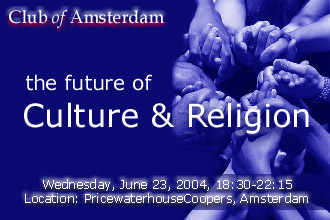


Customer Reviews
Thanks for submitting your comment!